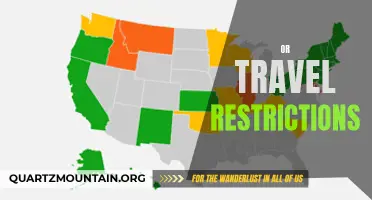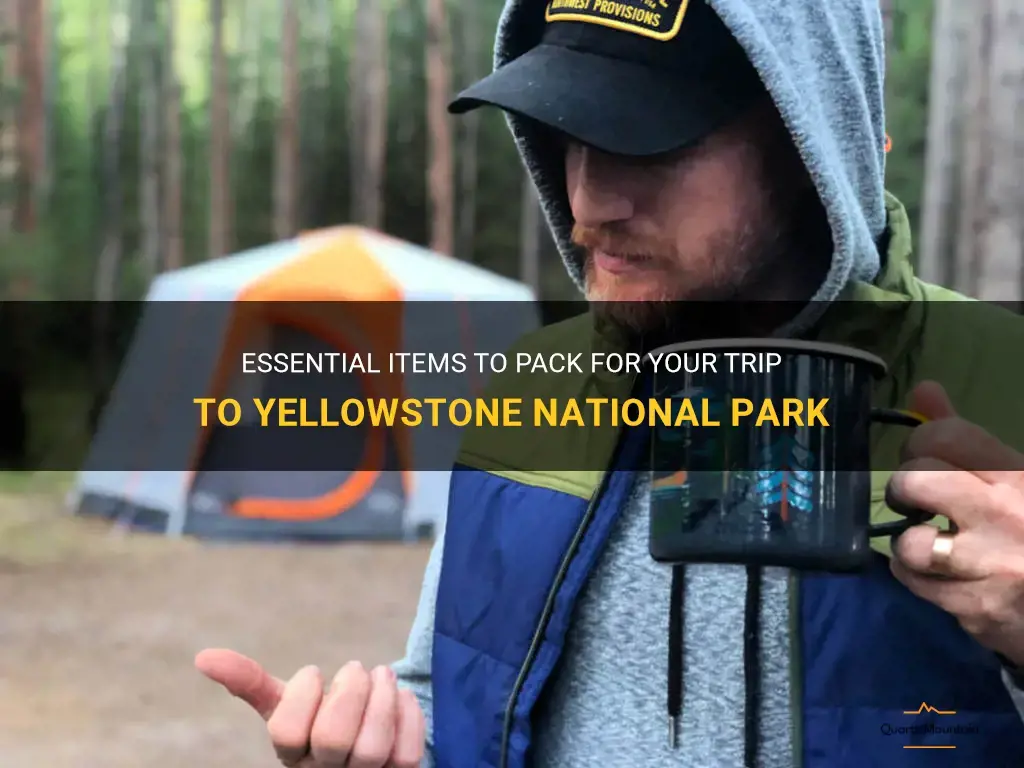
Planning a trip to Yellowstone National Park? Don't forget to pack the essentials! From sturdy hiking boots to bear spray, there are a few items that are a must-have for a successful and enjoyable adventure in this iconic national park. Whether you're a seasoned camper or a first-time visitor, this comprehensive guide will ensure you're well-prepared for your Yellowstone experience. So, grab your backpack and let's explore the essential items you need to pack for your trip to Yellowstone National Park!
What You'll Learn
- What are the essential clothing items to pack for a trip to Yellowstone National Park?
- Are there any specific gear or equipment recommendations for visiting Yellowstone National Park?
- Should I pack any specific footwear for hiking and exploring the park?
- Are there any specific items that you recommend packing for wildlife viewing in Yellowstone National Park?
- Are there any items that are prohibited or restricted in Yellowstone National Park that I should be aware of when packing?

What are the essential clothing items to pack for a trip to Yellowstone National Park?
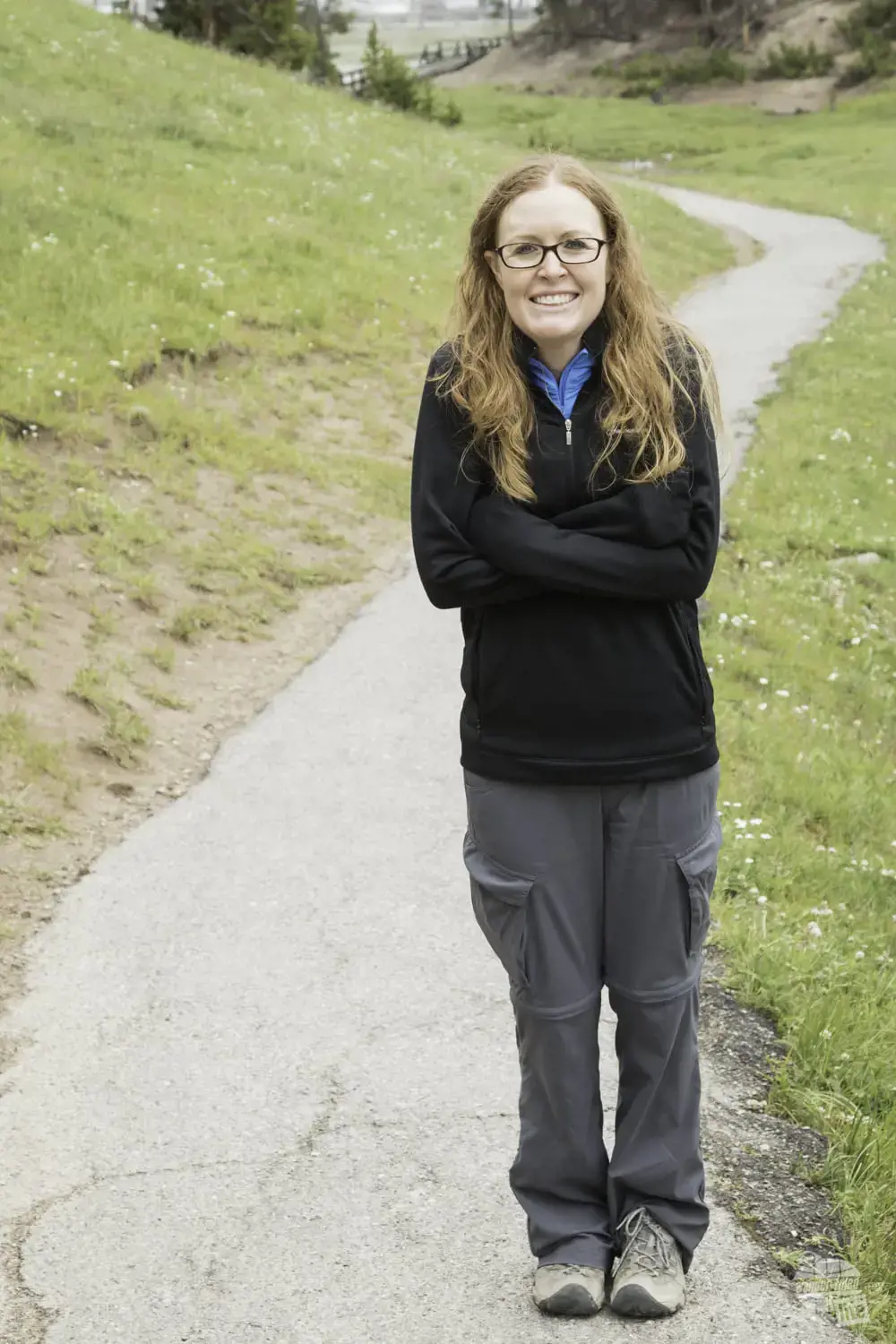
As you prepare for a trip to Yellowstone National Park, it is essential to pack the right clothing items to ensure you have a comfortable and enjoyable experience. Yellowstone National Park is known for its diverse climate, with temperatures ranging from cool mornings to hot afternoons, and even cold nights. Additionally, the park is home to various terrains, including mountains, forests, and geothermal areas. To make the most of your trip, here are some essential clothing items to consider packing:
- Layering Jackets: Due to the changing temperatures throughout the day, it is crucial to pack layering jackets. Start with a lightweight, moisture-wicking base layer that helps keep you dry and regulates your body temperature. Add a mid-layer, such as a fleece or down jacket, for insulation during chilly mornings or evenings. Finally, include a waterproof and windproof outer layer to protect yourself from rain or unexpected weather changes.
- Long-sleeve Shirts and T-shirts: Pack a mix of long-sleeve shirts and t-shirts suitable for various weather conditions. Long-sleeve shirts offer protection against the sun's rays during hot days and help keep you warm when temperatures drop. T-shirts are comfortable for mild weather and can be paired with flannel shirts or jackets for additional warmth.
- Pants and Shorts: Pack a pair of comfortable, quick-drying pants for hiking and exploring the park's trails. Opt for pants that can convert into shorts for versatility. Additionally, include a pair of shorts for hot days or relaxing around the campground.
- Hiking Boots: Yellowstone National Park offers a plethora of hiking opportunities, so investing in a good pair of hiking boots is essential. Look for waterproof and sturdy boots with ankle support to protect your feet and ankles while traversing uneven terrain.
- Insulated Hat and Gloves: Even during the summer months, Yellowstone National Park can experience cooler temperatures, especially at higher elevations. Pack an insulated hat and gloves to keep your head and hands warm during chilly mornings or if you plan to visit geothermal areas where the air can be cooler.
- Moisture-Wicking Socks: To avoid blisters and keep your feet comfortable throughout the day, pack moisture-wicking socks. Look for socks made of merino wool or synthetic materials that help regulate temperature and wick away moisture to keep your feet dry.
- Sun Protection: Yellowstone National Park is known for its sunny days, so be sure to pack sun protection items. Include a wide-brimmed hat that provides shade for your face and neck. Don't forget to pack sunscreen with a high SPF rating to protect against harmful sun rays.
- Insect Repellent: Mosquitoes and other biting insects are prevalent in certain areas of Yellowstone National Park, especially in early summer. Pack insect repellent to avoid bites and discomfort during your trip.
Remember to check the weather forecast for Yellowstone National Park before your visit and adjust your clothing choices accordingly. By packing the right clothing items, you can stay comfortable and make the most of your trip to this incredible national park.
Essential Packing List for Your Rocky Mountain National Park Adventure
You may want to see also

Are there any specific gear or equipment recommendations for visiting Yellowstone National Park?
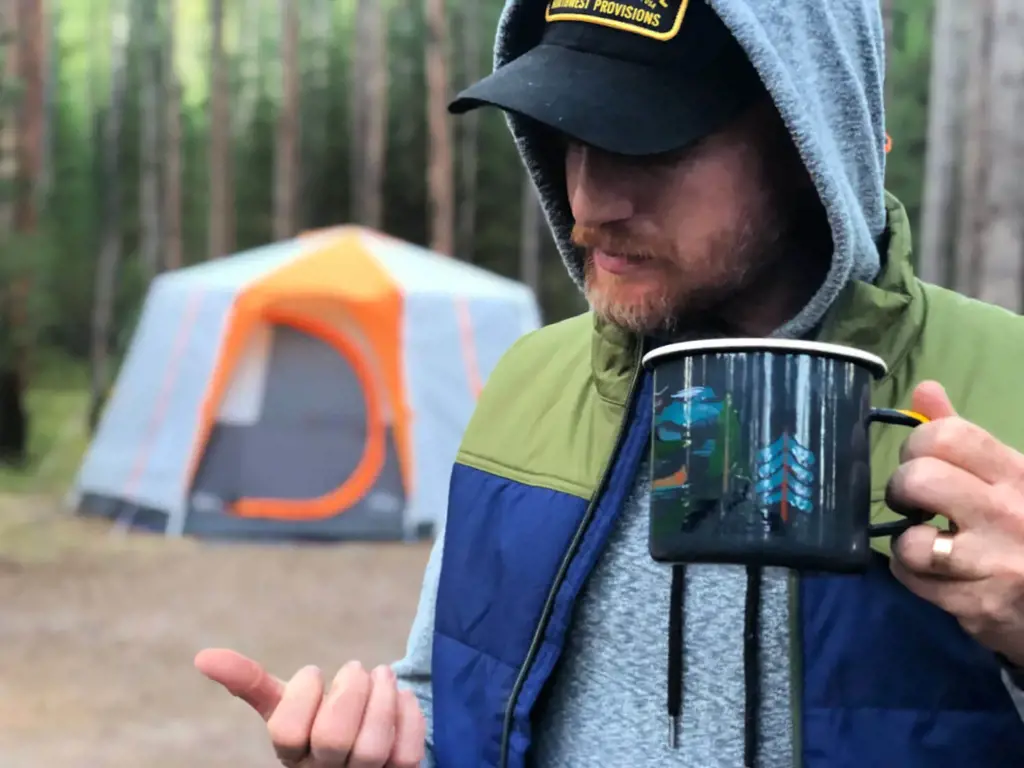
Are you planning a trip to Yellowstone National Park? This iconic national treasure offers stunning natural beauty and diverse wildlife. To make the most of your visit, it’s essential to come prepared with the right gear and equipment. Here are some recommendations to ensure a successful and enjoyable experience at Yellowstone.
- Clothing: Yellowstone is known for its unpredictable weather, so dressing in layers is crucial. Pack a waterproof and windproof jacket, as well as a fleece or sweater for colder temperatures. Don't forget to bring a hat, gloves, and sturdy hiking boots for your outdoor activities.
- Binoculars: Yellowstone is home to an abundance of wildlife, including grizzly bears, wolves, and elk. To get a closer look at these magnificent creatures, consider bringing a pair of binoculars. They will allow you to observe wildlife from a safe distance while respecting their natural habitat.
- Camera: With its ethereal landscapes, Yellowstone provides endless opportunities for photography. Whether you’re a professional or an amateur, be sure to pack a camera with extra batteries and memory cards. Capture the park's unique geysers, colorful hot springs, and breathtaking vistas.
- Hiking Gear: Yellowstone offers numerous hiking trails that cater to all fitness levels. To fully explore the park, bring a daypack with essentials such as a water bottle, snacks, a map, a compass or GPS device, and a headlamp or flashlight. Don't forget to wear comfortable, moisture-wicking socks to prevent blisters during long hikes.
- Bear Spray: Yellowstone is bear country, so carrying bear spray is strongly recommended. This non-lethal deterrent can help protect you in case of a bear encounter. Familiarize yourself with how to use bear spray before your trip and always keep it accessible while hiking or exploring the park.
- Camping Gear: If you plan to camp in Yellowstone, you'll need appropriate gear. Check the park's regulations and make reservations for campsites well in advance. Bring a tent, sleeping bag, sleeping pad, and camping stove. Remember to store food and scented items properly to prevent attracting bears.
- Maps and Guidebooks: Yellowstone is vast, and having a good map or guidebook will help you navigate the park efficiently. Familiarize yourself with the park's different regions and popular attractions to make the most of your visit. Stop by one of the visitor centers for up-to-date information and advice from park rangers.
Remember, when visiting Yellowstone, it's important to respect the environment and wildlife. Leave no trace, practice responsible hiking, and follow park regulations. By coming prepared with the right gear and equipment, you'll be able to fully immerse yourself in the natural wonders and unique experiences that Yellowstone National Park has to offer.
The Essential Packing List for an Unforgettable Sedona Adventure
You may want to see also

Should I pack any specific footwear for hiking and exploring the park?
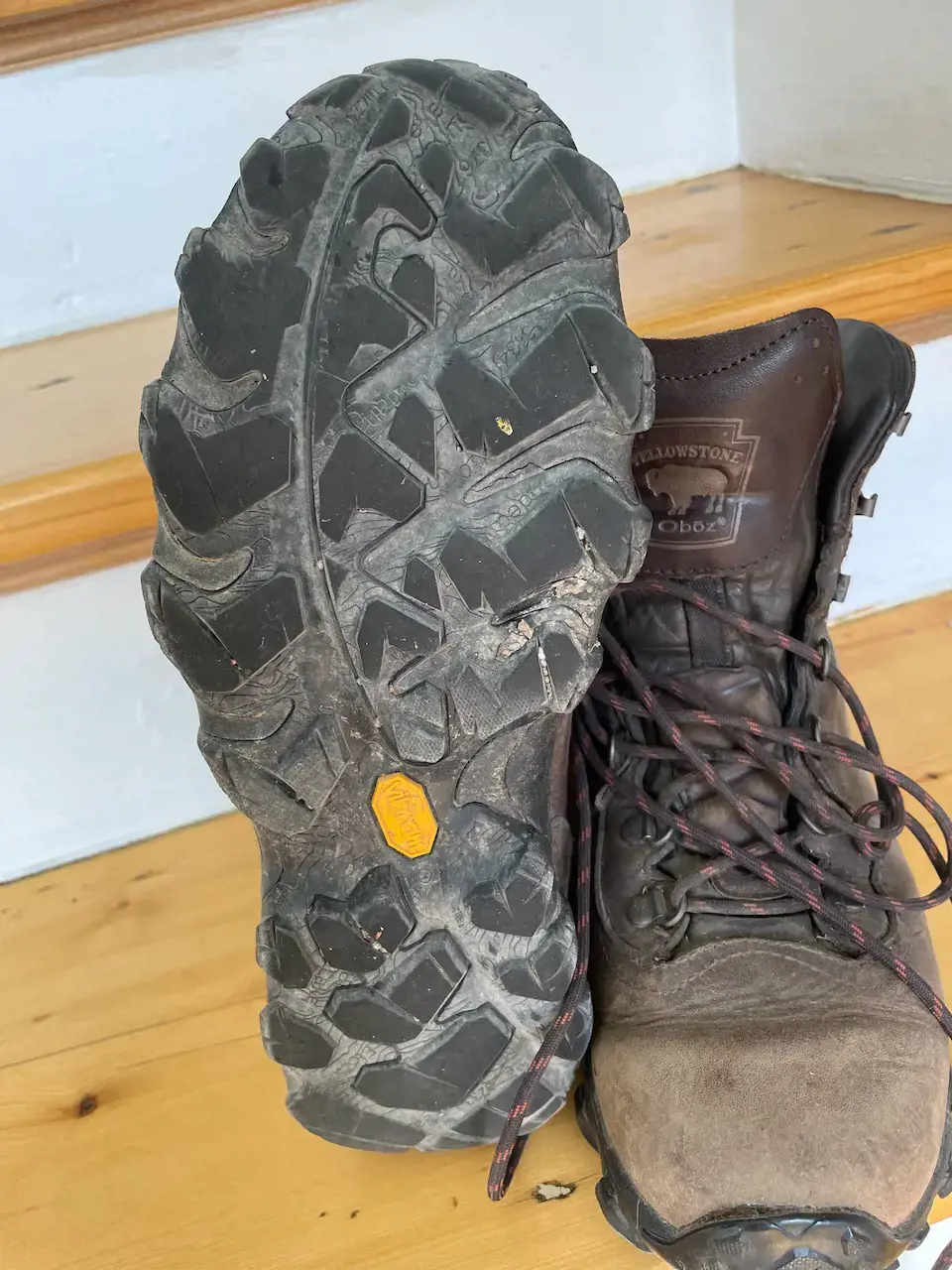
When planning a trip to a national park for hiking and exploring, it is essential to pack appropriate footwear to ensure a comfortable and safe experience. The right pair of shoes can make a significant difference in your overall enjoyment and ability to tackle different terrain. In this article, we will discuss the specific footwear you should consider packing for your outdoor adventures.
Hiking Boots:
Hiking boots are a staple for any outdoor enthusiast. They provide ankle support, stability, and protection from rocks, roots, and other obstacles on the trail. Look for boots with sturdy soles, good traction, and a comfortable fit. It is recommended to break in your hiking boots before your trip to avoid blisters and discomfort.
Trail Running Shoes:
If you prefer a lighter and more flexible option, trail running shoes can be a suitable alternative to hiking boots. These shoes offer excellent grip and traction, making them ideal for traversing different terrains. However, they may lack the ankle support provided by hiking boots, so take your own preferences and the difficulty of the trails into account when making your decision.
Hiking Sandals:
For hikes in warm and dry climates or for water activities, consider packing a pair of hiking sandals. These sandals are designed to be breathable, quick-drying, and provide maximum comfort in hot weather. Hiking sandals with sturdy soles and toe protection are essential to shield your feet from sharp rocks and debris on the trail.
Water Shoes:
If you plan on crossing rivers, exploring wet caves, or engaging in water-based activities such as kayaking or snorkeling, packing a pair of water shoes is a must. Water shoes offer excellent traction in wet environments, protect your feet from sharp objects, and dry quickly to prevent discomfort.
Socks:
No matter which footwear option you choose, investing in high-quality hiking socks is crucial. Look for socks made from moisture-wicking materials such as merino wool or synthetic blends. These socks will keep your feet dry, reduce friction, and prevent blisters during long hikes.
It is essential to remember that different terrains and climates may require different footwear choices. Research the specific national park you plan to visit and consider the weather conditions and terrain before deciding on what shoes to pack. Additionally, if you have any foot conditions or require orthopedic support, consult with your doctor or a podiatrist to ensure you choose the most appropriate footwear for your needs.
In conclusion, packing the right footwear is essential for a successful hiking and exploring experience in a national park. Whether you choose hiking boots, trail running shoes, hiking sandals, or water shoes will depend on the terrain, climate, and personal preferences. Don't forget to invest in high-quality hiking socks to keep your feet comfortable and blister-free during your adventures. With the right footwear, you'll be ready to tackle any trail and thoroughly enjoy your time in the national park.
Essential Items for Your Trip to Jamaica: A Packing Checklist
You may want to see also

Are there any specific items that you recommend packing for wildlife viewing in Yellowstone National Park?
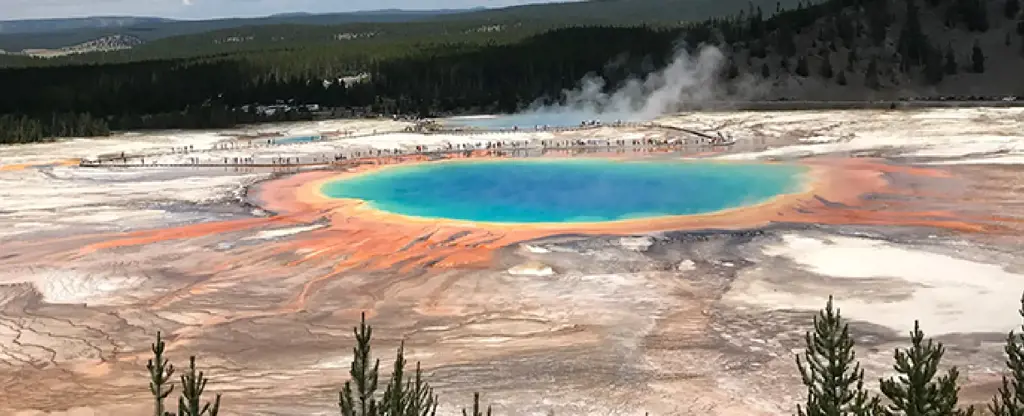
When it comes to wildlife viewing in Yellowstone National Park, packing the right items can greatly enhance your experience. Yellowstone is home to an abundant variety of wildlife, including bears, wolves, elk, bison, and many others. To make the most of your wildlife viewing adventure, here are some specific items that you should consider packing:
- Binoculars: A good pair of binoculars is essential for wildlife viewing. Yellowstone is a vast park, and wildlife sightings can often be at a distance. Binoculars allow you to get a closer look at the animals without disturbing them or getting too close for your own safety. Look for binoculars with a high magnification power and a wide field of view.
- Camera with a telephoto lens: Yellowstone offers incredible opportunities for wildlife photography. To capture those memorable moments, a camera with a telephoto lens is a must. A telephoto lens allows you to zoom in on the animals and capture detailed shots without getting too close. Additionally, consider packing extra memory cards and batteries to ensure you don't miss any great shots.
- Field guide: A field guide to the wildlife of Yellowstone can be a valuable resource. It can help you identify the different species you encounter and provide information about their behaviors and habitats. Look for a field guide that is specific to the Yellowstone region, as it will have more relevant information.
- Hiking boots: Yellowstone has many hiking trails that lead to prime wildlife viewing areas. To explore these trails comfortably and safely, a good pair of hiking boots is essential. Look for boots that provide ankle support, are waterproof, and have good traction to handle various terrains.
- Insect repellent: Yellowstone is known for its mosquito and bug population, especially during the summer months. To protect yourself from these pesky insects, pack an effective insect repellent. Look for a repellent that contains DEET or another EPA-approved ingredient to provide long-lasting protection.
- Layered clothing: Yellowstone's weather can be unpredictable, even in the summer. It is important to pack layered clothing to adjust to changing temperatures. Start with a moisture-wicking base layer, add a warm middle layer, and top it off with a waterproof and windproof outer layer. Also, don't forget to pack a hat, gloves, and a scarf for extra insulation.
- Snacks and water: Wildlife viewing can be a time-consuming activity, and it's important to stay hydrated and energized. Pack plenty of water and snacks to keep you fueled throughout the day. Opt for lightweight and non-perishable snacks like energy bars, trail mix, and dried fruit.
Remember, when wildlife viewing in Yellowstone, it is crucial to respect the animals and their habitats. Keep a safe distance, stay on designated trails, and follow the park's rules and guidelines. By packing the right items and following these guidelines, you can have an unforgettable wildlife viewing experience in Yellowstone National Park.
Essential Items to Pack for a Trip to the Kalahari Desert
You may want to see also

Are there any items that are prohibited or restricted in Yellowstone National Park that I should be aware of when packing?
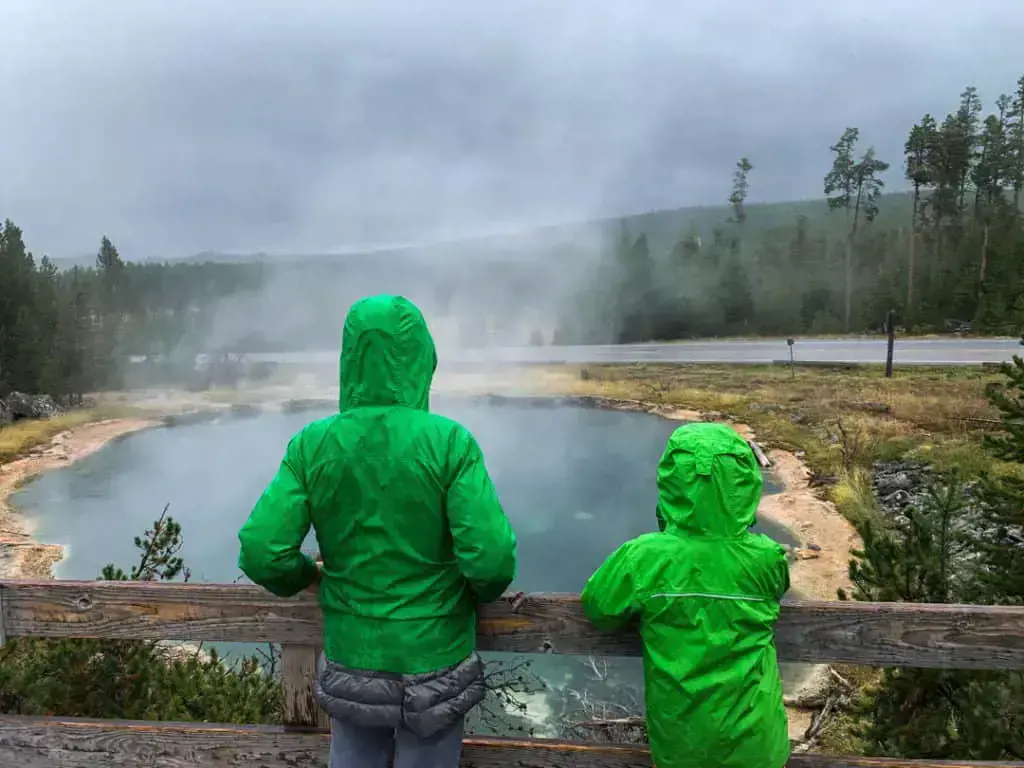
When planning a trip to Yellowstone National Park, it's important to be aware of any prohibited or restricted items that may not be allowed within the park. This is to ensure the safety and preservation of the park's natural resources. Here are some items you should be aware of when packing for your visit to Yellowstone:
- Fireworks: Fireworks are strictly prohibited in Yellowstone National Park. The use of fireworks can pose a significant fire risk, especially in the dry and forested areas of the park. It is important to respect this rule to protect the park's ecosystem and prevent any potential wildfires.
- Drones: The use of drones within Yellowstone National Park is also prohibited. Drones can disturb wildlife and disrupt their natural behaviors. Additionally, the noise and presence of drones can disturb other visitors' experiences in the park. If you plan on bringing a drone, it's important to leave it behind or use it outside the boundaries of the park.
- Pets: While pets are allowed in Yellowstone National Park, they must be kept on a leash at all times and are restricted to certain areas. Pets are not allowed on boardwalks, trails, or in the backcountry. It's important to follow these restrictions to minimize the impact on wildlife and other visitors.
- Fishing: Fishing is allowed in Yellowstone National Park, but it is subject to certain regulations. A valid fishing license is required, and specific limits and restrictions apply to different areas and species of fish. It's important to familiarize yourself with the park's fishing regulations before casting your line.
- Camping: Camping is a popular activity in Yellowstone National Park, but there are regulations to ensure the preservation of the park's resources. Camping is only allowed in designated campgrounds, and backcountry camping requires a permit. It's important to follow the rules and practice Leave No Trace principles to minimize your impact on the environment.
- Firearms: Firearms are allowed in Yellowstone National Park, but they must be carried and used in accordance with federal, state, and local laws. It's important to familiarize yourself with the specific regulations and restrictions regarding firearms in the park.
- Artifacts and Natural Objects: It is strictly prohibited to remove or disturb any artifacts or natural objects within Yellowstone National Park. This includes rocks, plants, animals, and cultural artifacts. The preservation of these resources is essential to maintaining the park's integrity and historical significance.
In conclusion, when packing for your visit to Yellowstone National Park, it's important to be aware of any prohibited or restricted items. Fireworks, drones, and the removal of artifacts or natural objects are strictly prohibited within the park. Additionally, there are specific regulations and restrictions regarding pets, fishing, camping, and firearms. By following these rules, you can help preserve the park's natural resources and ensure a safe and enjoyable visit for everyone.
Essential Items to Bring for Your Niagara Falls Adventure
You may want to see also
Frequently asked questions
When packing for a trip to Yellowstone National Park, it's important to be prepared for the unpredictable weather conditions. Make sure to bring layers of clothing, including a waterproof jacket and sturdy hiking boots. Don't forget to pack sunscreen, a hat, and sunglasses to protect yourself from the sun. It's also a good idea to bring a refillable water bottle and snacks, as there aren't many dining options within the park. Finally, a camera and binoculars are essential for capturing the stunning wildlife and natural beauty of Yellowstone.
If you plan on hiking in Yellowstone National Park, there are a few additional items you should pack. First, bring a backpack to carry your essentials, such as water, snacks, a map, and a compass or GPS device. It's also a good idea to bring a first aid kit in case of any injuries or emergencies. Yellowstone is known for its bear population, so it's recommended to carry bear spray for added safety. Additionally, wearing lightweight, moisture-wicking clothing and comfortable hiking socks will help keep you comfortable during your hike.
Yes, you can definitely pack a tent for camping in Yellowstone National Park. The park offers several campgrounds where you can set up your tent and enjoy a night under the stars. However, it's important to note that camping in Yellowstone requires a permit, which can be obtained from the park's visitor center or through the official website. It's also important to follow the park's guidelines for camping, such as storing food properly to prevent attracting wildlife. Additionally, make sure to pack a sleeping bag, camping stove, and other camping essentials to ensure a comfortable and enjoyable camping experience.




